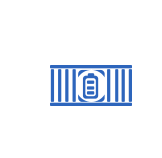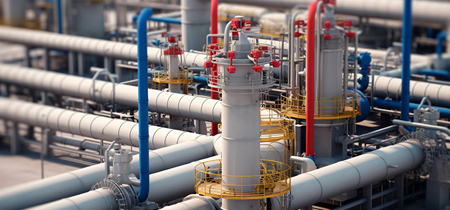Under the New Generation Fuels Act of 2021, proposed by the U.S. Senate and
sponsored by more than 20 members of the U.S. House of Representatives, the E15
mixture would be increased to E20 and the E25 mixture would be increased to E30.
High-concentration ethanol gasoline helps increase the country's gasoline supply
and reduce its dependence on oil.
Since 2007, UL Solutions has been providing professional testing,
inspection and certification services for fuel tankers and their components for
ethanol gasoline with nominal ethanol concentrations greater than 10%, such as
E25 and E85. Currently, E25 certification covers E20 blends, all ethanol
standards have been revised, and E40 is used as a test fluid to evaluate E30
products.
Certification of refueling machines and their components
UL Solutions uses many years of certification experience to certify
refueling machines and their components for filling with ethanol concentrations
greater than 10%, in a variety of product categories. We can test, inspect and
certify the following products:
Electric Fuel tankers (EWTV) - When the ethanol concentration is 10% or
less (e.g. E10), it is subject to UL 87 Safety Standard for Electric Fuel
tankers for Petroleum Products. In addition, we test, inspect and certify
electric refueling machines for ethanol gasoline with nominal ethanol
concentrations greater than 10% according to UL 87A, Standard for Electric
refueling machines for gasoline and ethanol gasoline with nominal ethanol
concentrations up to 85% (e.g., E0-E85).
Emergency Break Valves (ERBY) and Swivel Connectors (ERLV) - Compliant with
UL 567, Safety Standard for Emergency Break Valves, Swivel Connectors, and Pipe
Fittings for Petroleum Products and LP-Gas, and UL 567A, Nominal ethanol
concentrations up to 85% (e.g. E0-E85) Standard for emergency break valves,
swivel connectors and piping fittings for gasoline and gasoline/ethanol
mixtures.
Refueling Guns (ETAZ) - Compliant with UL 2586, Safety Standard for Hose
refueling Guns, and UL 2586A, Standard for Hose refueling guns for gasoline and
gasoline/ethanol mixtures with nominal ethanol concentrations up to 85% (e.g.
E0-E85).
Emergency shut-off Valve (EUCV) - Compliant with UL 842 Safety Standard for
Flammable Liquid Valves and UL 842A Standard for gasoline and gasoline/ethanol
mixture valves with nominal ethanol concentrations up to 85% (e.g. E0-E85).
Flammable Liquid Filters (VXYV) - Compliant with UL 331 Safety Standard for
Flammable Liquids and anhydrous ammonia Filters, and UL 331A Standard for
gasoline and gasoline/ethanol mixture filters with nominal ethanol
concentrations up to 85% (e.g., E0-E85).
Flammable Liquids and Diesel Exhaust Liquid Hose Assemblies (MVQJ) -
Compliant with UL 330, Hoses and hose Assemblies for Filling Flammable Liquids,
and UL 330A, Hoses and hose Assemblies for filling gasoline and gasoline/ethanol
mixtures with nominal ethanol concentrations up to 85% (e.g. E0-E85).
Visit UL Product iQ for more information about product categories and
products certified in those categories. Download our Fuel Compatibility tool for
more information on meeting the fuel compatibility requirements of EPA, state or
other regulatory agencies.
Identify UL certified refueling machines and their components
UL certified flammable liquid filling units are marked with the UL
Certified mark or enhanced mark, which includes the UL mark, the words
"Certified" and "safe," geographic identifiers, product names (e.g. "Refueling
machine accessories", "refueling gun", etc.) and the document number, or UL
listing mark, including the words "UL" and "Listing" in the circular symbol, the
control number, and the product name. For a detailed description of these marks,
see the guide information for individual product categories.
The standard requires that the specific concentration of ethanol in the
filling device should be greater than 10%(e.g. E10) and include additional
labeling. Ethanol-gasoline refueling machines with nominal ethanol
concentrations of up to 25% are also required to carry the warning "For use with
E25 grade suspension hardware only." Ethanol gasoline refueling machines with
nominal ethanol concentrations of more than 25% and less than 85% should be
labeled "Used only in the following products", followed by the brand name and
the specific model and name of the allowable hose assembly, emergency pull off
valve, swivel connector and fuel gun combination. When performing the intended
assembly or replacement of the suspension hardware, this text must be placed
where it can be seen by the responsible person. As part of its certification,
the components identified have the same concentration of ethanol as the fuel
dispenser. Products must also include a logo indicating that they need to be
used in conjunction with suspension hardware with the same ethanol
concentration. The tanker assembly must also be labeled with the fuel grade it
is intended to use, such as gasoline, "E25", "E40" or "E85" (if applicable).
Precautions for fueling system installation
To ensure that gasoline/methanol fuel filling systems are installed in
compliance with applicable codes and safety standards, it is recommended
that:
Determine the fuel mix to be filled.
Verify that the installation complies with applicable specifications.
Use UL certified (listed) fuel tankers and their components, which are
labeled as suitable for use with the fuel to be filled.
Verify that the components to be installed on the tanker are labeled on the
tanker's logo.
Inspect and maintain equipment according to fire code.
UL Solutions can assist customers in understanding complex regulatory
requirements regarding fuel filling systems and other flammable and combustible
liquid equipment. We published our first natural gas and oil safety standard in
1922, so we have extensive experience in interpreting and dealing with natural
gas and oil safety issues. We use our extensive industry experience and
expertise to help manufacturers, users and inspection organizations confirm that
they meet the needs of a wide range of gas and oil equipment.
 UL Automatic Control Cabinet
UL Automatic Control Cabinet
 UL Medium And High Voltage Switchgear
UL Medium And High Voltage Switchgear
 UL Low voltage switchgear
UL Low voltage switchgear
 UL distribution cabinet
UL508A Control Cabinet UL-UPS System UL Explosion-proof Cabinet UL High Voltage Frequency Converter Cabinet UL High Pressure Soft Start CabinetUL Medium Pressure Air Insulated Switchgear UL Medium Pressure Gas Insulated Switchgear UL Ultra-thin wind power switchgear UL Medium and high voltage motor control Center UL Railway power supply medium and high voltage switchgear
UL distribution cabinet
UL508A Control Cabinet UL-UPS System UL Explosion-proof Cabinet UL High Voltage Frequency Converter Cabinet UL High Pressure Soft Start CabinetUL Medium Pressure Air Insulated Switchgear UL Medium Pressure Gas Insulated Switchgear UL Ultra-thin wind power switchgear UL Medium and high voltage motor control Center UL Railway power supply medium and high voltage switchgear











